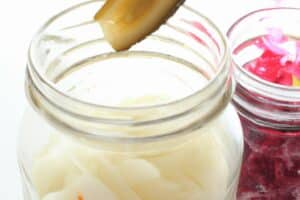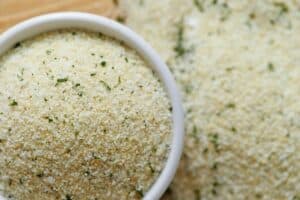Sumac is a very particular spice that can be hard to emulate with alternatives. However, there are still plenty of options if you need a quick sumac substitute.
Lemon zest, Za’atar, lemon pepper seasoning, tamarind, and vinegar are five of the top sumac spice substitute.
Sumac has a very similar taste to lemon juice, being sweet and sour at the same time. Its distinctive red hue is much sought-after for that perfect pop of color. As a popular spice for Middle Eastern dishes, it often garnishes falafel or hummus, and is frequently the source of “pink lemonade.”
There is no “correct” substitution for sumac, but some choices are better than others. This list of five all offer the same kind of sweet and sour tang sumac is famous for.
Some choices are conveniently available at the grocery store or perhaps already in your house. Others might be harder to find, but provide an authentic-tasting dish, especially if you’re trying to capture a true Middle Eastern flavor.
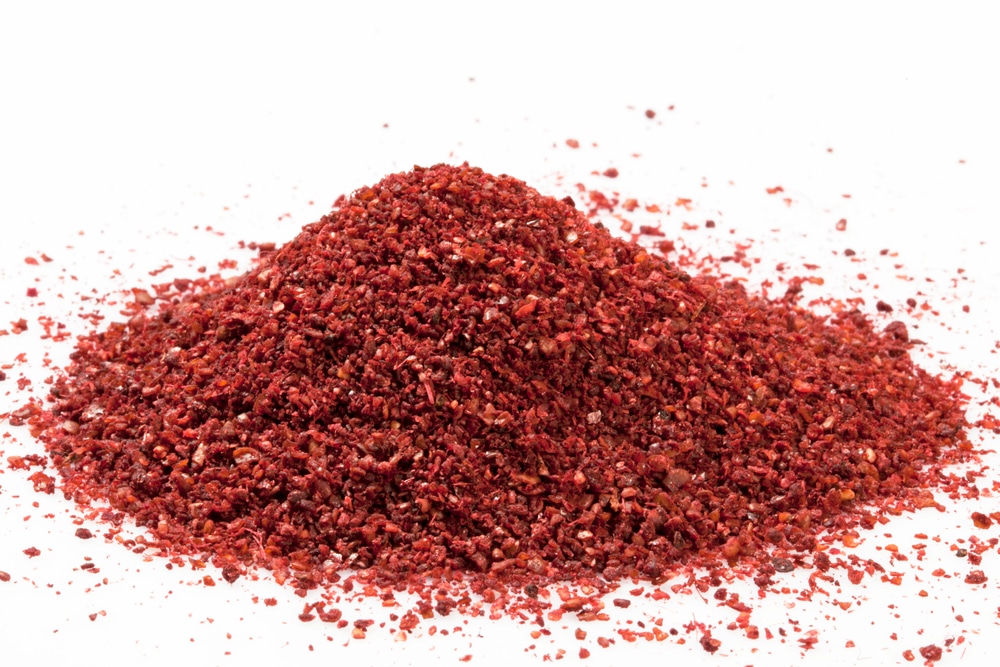
Recommended Sumac Substitutes
1. Lemon Pepper Seasoning
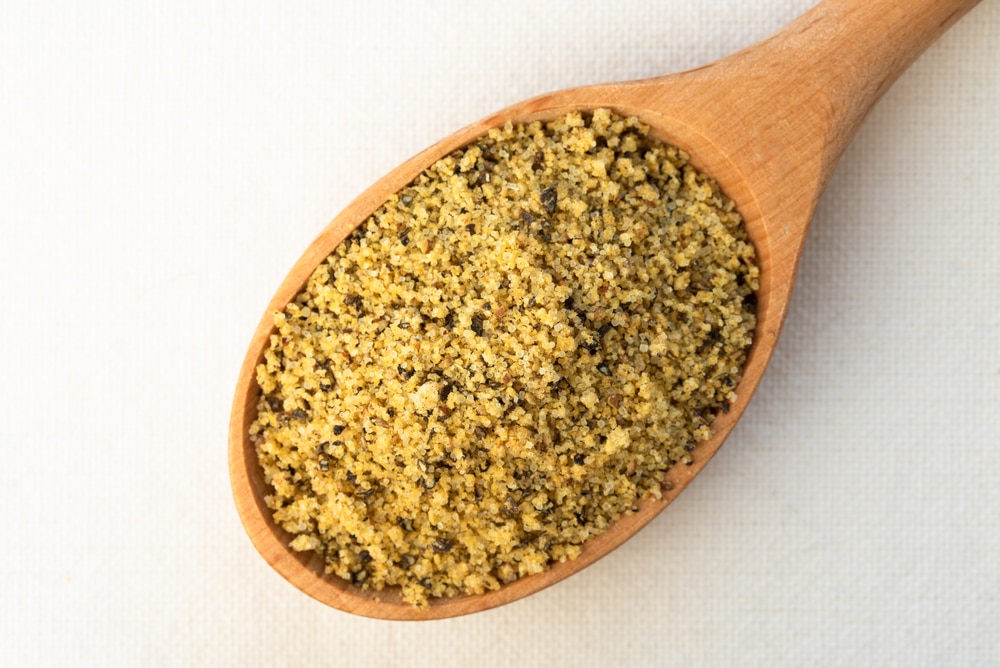
Lemon pepper seasoning matches more elements of sumac flavoring than any other spice. It’s tangy and tart but also a little salty and peppery. The mixture of cracked black pepper and dried lemon zest is easy to replicate even if you can’t find it in the store. Therefore, it’s perfectly on-hand and ready as a sumac alternative, and it’s not overpowering in flavor like some other substitutions.
When you’re trying to figure out portions, use one and a half times more lemon pepper seasoning than the required sumac. The seasoning isn’t quite as potent as sumac can be, so a larger amount will help with the flavor. Adding a bit of salt to the seasoning can also help you recapture the sumac flavor.
Any Middle Eastern dish can include lemon pepper seasoning, as many of the seasoning’s flavors will complement those in the dish. Lemon pepper seasoning is also a fine spice for seafood or poultry, especially when you’re grilling either.
2. Za’atar
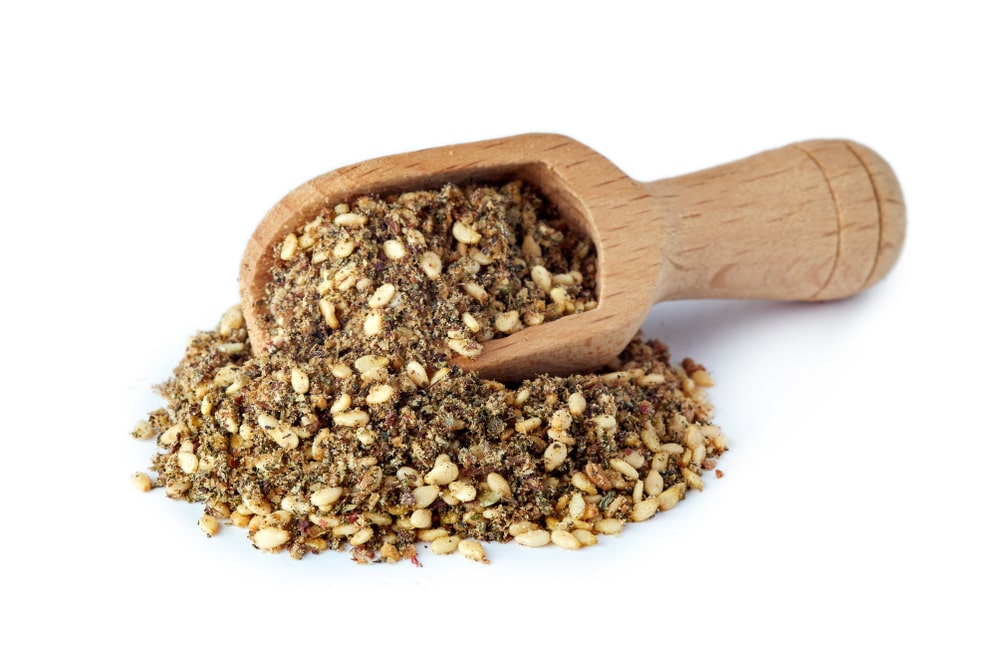
Za’atar is less common than other alternatives on this list, but if you happen to find it in your grocery store, it holds up as a sumac substitute. It is a spice blend common in Middle Eastern cuisine that contains sumac, salt, sesame seeds, and dried herbs like thyme, marjoram, and oregano. The sumac within the blend is often the strongest flavor, which makes it a particularly adept alternative in recipes.
Any recipe that calls for sumac can easily use Za’atar in its place. It is one of the simpler substitutes because you can use the exact same portions as sumac. If you find the flavor lacking, all you have to do is add a touch more.
The best places to substitute Za’atar for sumac are where it originally calls for sumac. If you’re planning on adding sumac to a dish that doesn’t require it, you can still use Za’atar instead, but it’ll change the flavor just as if you decided to throw in some sumac that isn’t on the ingredient list.
3. Lemon Zest
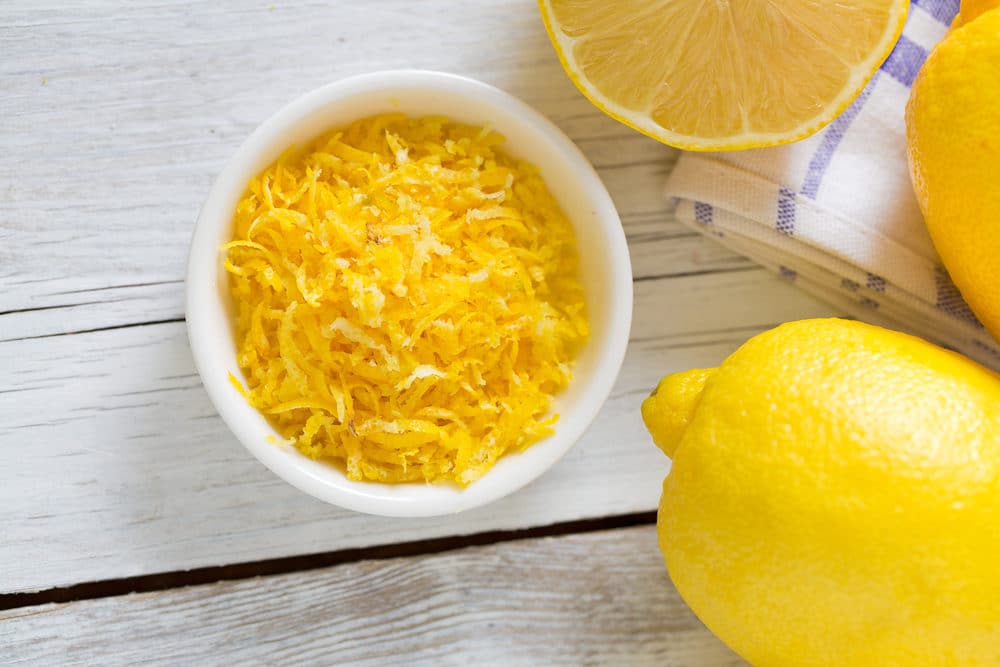
Using lemon zest will give you the right level of acidic tartness for a sumac alternative. It’s simple to acquire as every grocery store carries lemons, and any household with a cheese grater can make their own zest.
It’s also easily mixed with other seasonings to help you achieve the right flavor of sumac. As lemon zest is obviously quite a citrus and lemony flavor, it doesn’t get quite the same peculiar taste as sumac spice.
Lemon juice is also a suitable substitute, and many people prefer it to zest because it’s easier to handle. Juicing a lemon requires little effort, and measuring the correct portion is much more straightforward with liquid.
Both lemon zest and juice will give your dish an extra sour taste, so using it sparingly at first will help you get a sense of how it affects the other flavors.
Some recipes might tell you to put the same amount of juice or zest as sumac when substituting, but it’s better to play on the side of caution. Putting in smaller amounts of lemon and increasing it bit by bit until you get the desired taste is a better way to go.
The taste of lemon goes well with Middle Eastern cuisine, so any dish that calls for sumac should be fine with a lemon zest or juice substitute. Similarly, Indian cuisine that uses sumac can also use lemons in its place.
Got excess lemon zest? See how to preserve lemon zest by freezing.
4. Tamarind

As a tropical fruit normally used in Indian and Thai cuisine, tamarind might be hard to get a hold of. However, its unique blend of tartness, sweetness, and sourness makes it an ideal sumac spice substitution. It comes in dried pods or a thick paste that can easily mix with your dish.
You only need a pinch of tamarind to whatever amount of sumac you’re substituting. If you can’t taste the flavor, carefully add a little more. Tamarind has a stronger flavor than sumac does, so adding the same portions will overwhelm the dish.
A Middle Eastern or Indian dish will be your best shot for substituting tamarind for sumac. Tamarind can replicate many of the flavors of sumac enough that it will complement other flavors of these cuisines.
Can’t find tamarind? Tamarind paste can be a substitute.
5. Vinegar

Another perfectly available substitute, vinegar, provides the same acidic tang that sumac does. Though it doesn’t add the same subtleties sumac offers, vinegar is a better choice than other spices for bringing your dish closer to what it should taste like.
When you’re adding vinegar instead of sumac, it’s crucial to start with small amounts. Vinegar has a much more overpowering taste than sumac, so if you use too much, it’ll flavor your dish more than what is necessary. You can always add more vinegar if it doesn’t taste right, but you can’t take it back out again.
Any recipe that calls for sumac can use vinegar instead. You could also add a hint of other seasonings if you’re going for a particular sumac influence that vinegar can’t replicate.
Frequently Asked Questions
Below are some frequently asked questions regarding sumac and its substitutions.
Making your own sumac spice is possible as long as you have the berries and a way to grind them up. Using the red sumac berries (white are poisonous), grind them up with a pestle and mortar or in a blender. Next, strain out the seeds so that they don’t affect the overall spice. The remaining leftover red particles are your sumac spice.
Sumac is not the same as Za’atar, as sumac is a stand-alone spice and Za’atar is a spice blend. However, sumac is a common ingredient in Za’atar as it makes up a portion of the spice blend.
Paprika is not a good choice to use in place of sumac if you want a similar taste. Paprika does not have the same flavor as sumac at all, though they do share a similar color. Usually, people will add paprika to a dish that calls for sumac because it’ll give the food the same lovely red coloring.
If you want both the flavor and the coloring but don’t have any sumac, you can use another spice for the flavor and a tiny bit of paprika to get the right shade.
Sumac is a Middle Eastern spice from the berries of a bush that belongs to the cashew family. It has a tart yet sweet flavor and is a bright red color similar in hue to paprika. Sometimes it is a spice or part of a spice rub or blend. At other times, sumac can be a condiment.
Sumac has plenty of benefits for health, such as decreasing blood pressure for people with hypertension. Studies show that sumac may lower blood sugar for people with type two diabetes. It also provides an extraordinary number of antioxidants and is high in vitamin C.



